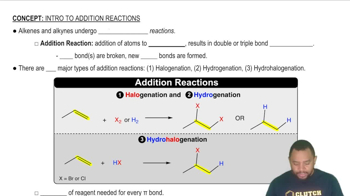Here are the essential concepts you must grasp in order to answer the question correctly.
Chemical Equations
Chemical equations represent the reactants and products in a chemical reaction, using symbols and formulas. Understanding how to manipulate these equations, such as adding or combining them, is crucial for deriving new relationships or results in chemistry. Each equation must be balanced to reflect the conservation of mass, ensuring that the number of atoms for each element is the same on both sides.
Recommended video:
Balancing Chemical Equations
Addition of Equations
Adding chemical equations involves combining the reactants and products of two or more equations to form a new equation. This process requires careful attention to ensure that the resulting equation is balanced and accurately represents the overall reaction. The addition of equations is often used to derive more complex reactions from simpler ones, illustrating how different processes can be interconnected.
Recommended video:
Balancing Chemical Reactions
Balancing chemical reactions is the process of ensuring that the number of atoms of each element is equal on both sides of the equation. This is essential for the validity of the equation, as it reflects the law of conservation of mass. Techniques for balancing include adjusting coefficients in front of compounds and ensuring that all elements are accounted for, which is critical when adding multiple equations together.
Recommended video:
Balancing Chemical Equations




